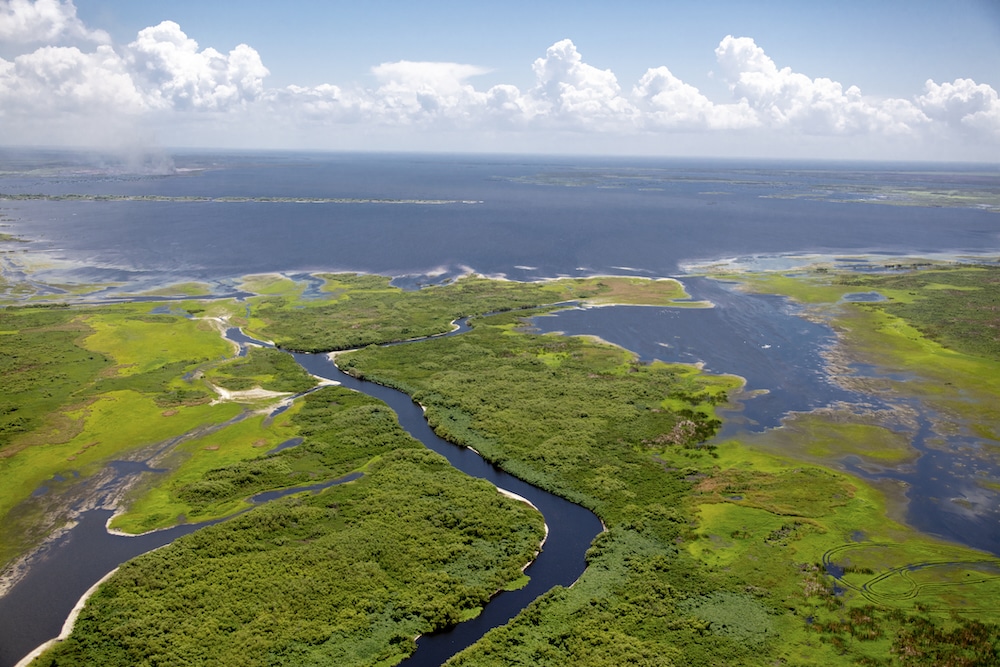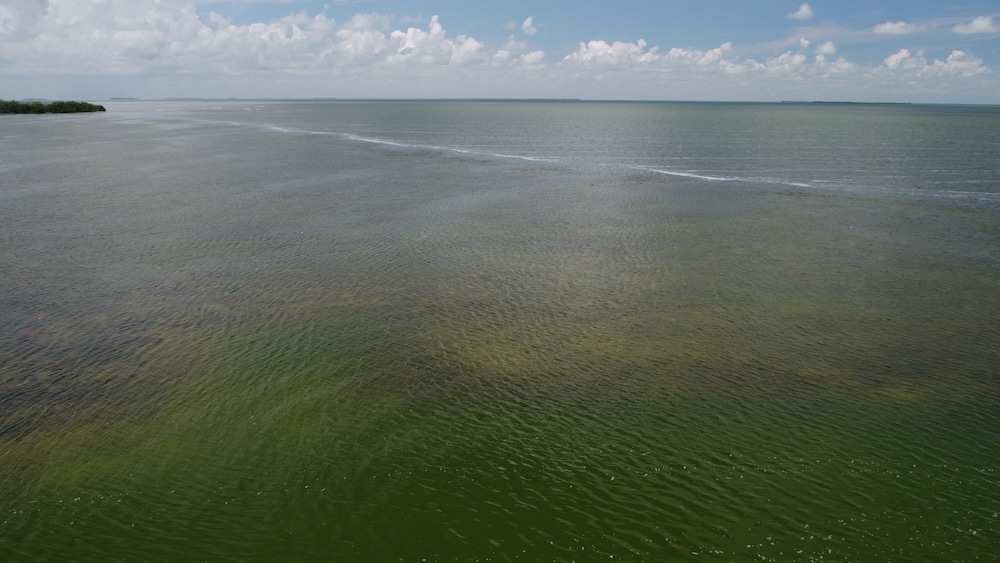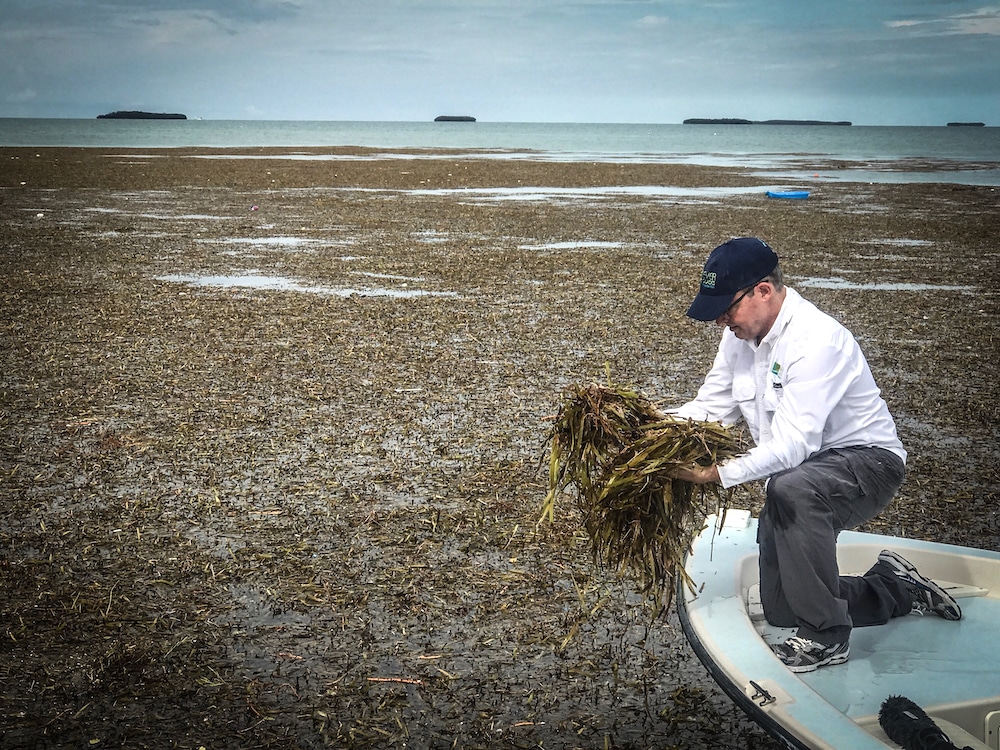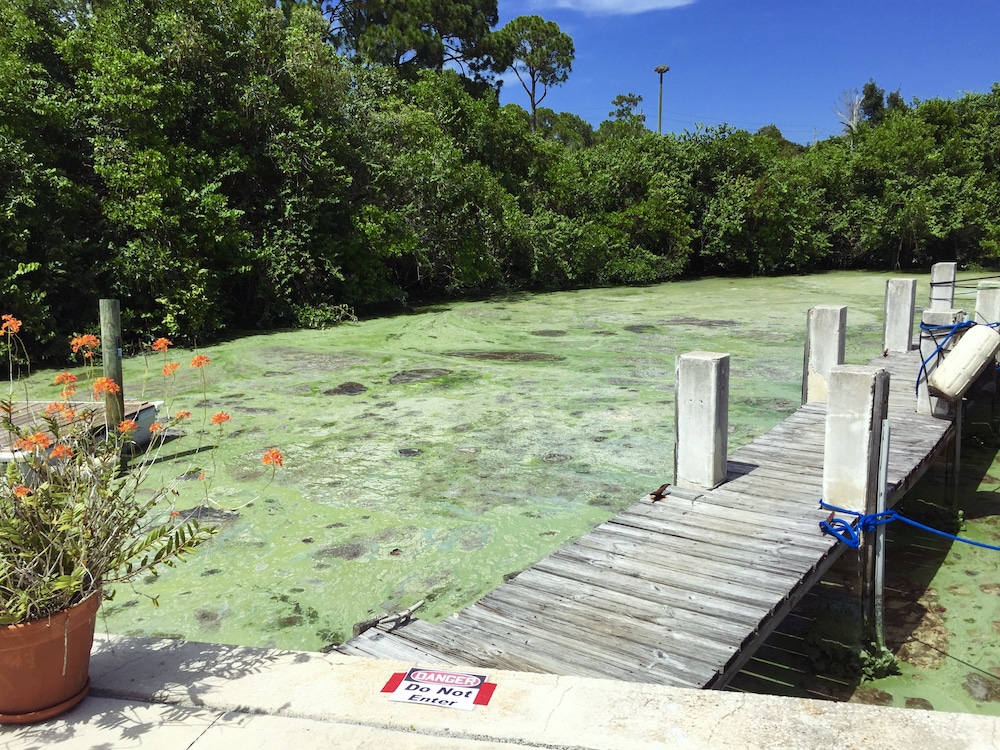Restoring Florida Everglades Depends Upon Fixing State’s Freshwater Flow
Published on by Trudi Schifter, CEO and Founder AquaSPE in Case Studies
We’ve made a mess, and now it’s time to fix it.
These are the unspoken mandates of Everglades conservation organizations working to restore healthy freshwater flow through the Sunshine State.
Water is life for planet and people. Therefore, when its flow is interrupted or cut off, there are dire consequences.
History of Water Flow

Freshwater at the south of Lake Okeechobee beginning its southward flow. 6381380 / iStock / Getty Images Plus
In Florida, freshwater from Lake Okeechobee in the middle of the state naturally flowed south through the Everglades and into Florida Bay and the present-day Florida Keys. In doing so, it nourished entire ecosystems.
According to the South Florida Water Management District (SFWMD), farms and communities developed around the lake in the late 1800s and early 1900s. Catastrophic hurricanes in 1926 and 1928 caused millions in damage and deaths by flooding, prompting the government to step in to control the water.
The Army Corps of Engineers built a series of canals to severely restrict how much water flows through the state. Instead of coming south through the Everglades, most is now discharged east and west, through concrete sloughs dredged for this specific purpose.
The result has been catastrophic for this ecosystem that evolved around the flow of water. One of the most invisible harms is hypersalinity.
Hypersalinity Is Getting Worse
“In general, hypersalinity refers to the salinity in a coastal water body,” explained Steve Davis, the chief science officer at The Everglades Foundation. “Ocean salinity is roughly 35 parts per thousand (ppt). If you’ve ever swam in the ocean and tasted it, you know what that is. When salt content gets higher than that of the ocean, we call it hypersalinity.”
Florida Bay is a body of water that sits south of Everglades National Park, thereby receiving any freshwater flows through that ecosystem. It’s flanked by saltwater from the Gulf of Mexico and the Atlantic Ocean. As such, it’s naturally a brackish environment.

A Florida Bay drone shot in 2022 shows the difference between algae blooms and clear water. The Everglades Foundation
Unfortunately, because of the restricted water flows through the state, Florida Bay currently receives less than half of its historical freshwater flows. “It’s all driven by water balance, and we changed the plumbing,” Davis explained. “It’s a wetland. If you deprive a wetland of water, especially freshwater, it’s going to have implications on the habitat and the ecology of the system in general.”
Basically, because of our water controls at Lake Okeechobee, Florida Bay, an 849 square mile area is becoming hypersaline more often and more intensely than ever before. Freshwater, like the water in Lake Okeechobee, has a salinity of zero. Ocean water typically has a salinity index of 35 ppt and historically, a healthy brackish Florida Bay might have had an index of 40. Florida Bay’s waters get trapped and evaporate in the shallow estuary, leaving salt behind. This is how the salinity of the bay begins to increase. Additionally, since rainfall helps to bring the salinity down, drought years exacerbate the effects. And, without freshwater coming down through the Everglades, there’s nothing to flush the system.

Steve Davis takes stock of the massive seagrass dieoff of 2017 following a hypersalinity event. The Everglades Foundation
Now, add in our disruptions to the natural flow of water from Lake Okeechobee, exacerbated by droughts and climate change. All this has caused Florida Bay’s salinity to reach up to 70 to 80 ppt – more than double that of the ocean, Davis lamented. In fact, we’re now at the point where average rainfall still results in salinity higher than the ocean, he said.
“This is devastating to the ecology and fisheries of Florida Bay,” Davis said. Effects he’s witnessed have been massive seagrass die offs and intense blooms of toxic algae. “It’s the downward spiral of the entire ecosystem. It goes from clear water to something that looks like pea soup.”

Green algae discharges from Lake Okeechobee show an ecosystem in decline. The Everglades Foundation
Heat Is a Double Whammy
That’s not all. Florida’s summers are notoriously, record-breakingly hot. In summer 2023, the heat disrupted the entire marine ecosystem and killed swaths of Florida’s already fragile coral reef.
“The combo of heat and hypersalinity is what is most devastating to the bay,” Davis said. “Hot, salty water doesn’t hold much oxygen, and oxygen is essential to the health of the bay and to large fish species that are highly coveted by anglers.”
Luckily, good rainfall and more freshwater flow through the current Everglades restoration of the Tamiami Trail prevented a hypersalinity event during the heatwave. But what happens during a drought?
Restoration and Combating Climate Change
Taxonomy
- Restoration
- River Restoration
- Stream Restoration
- Ecosystem Restoration